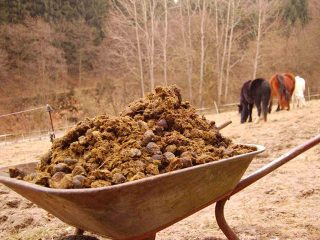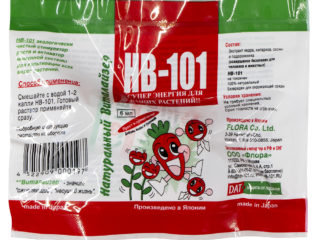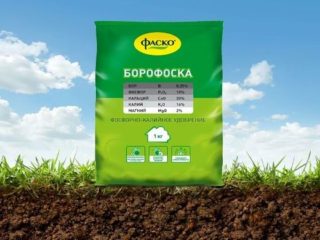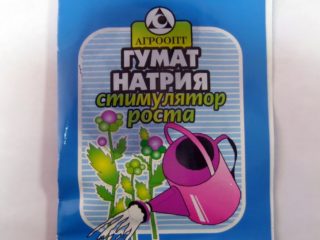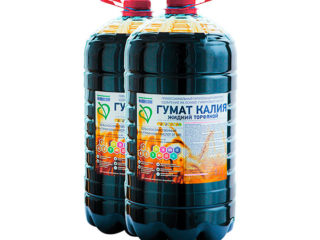Content
It is quite difficult to grow a good harvest of vegetable, berry or fruit crops without fertilizing. During certain periods of the growing season, different drugs are used. More often, chemical agents are used, which contain all the elements necessary for growth. Reviews of the fertilizer Solution allow us to conclude that the complex preparation is effective for all types of crops, including flowering and decorative.
What is the Solution for?
Preference is given to the solution for its versatility and balanced complex of nutrients necessary for normal growth, flowering and fruiting of all types of plants. Due to its composition, the product is effective during the formation of fruits, during the growth of green mass and during flowering.
The solution is necessary for the full growth of seedlings. It is used to treat seeds before sowing. Nutrients are in an easily assimilated form, they are not washed out from the soil. Top dressing is carried out at the beginning of the growing season and in autumn, the complex preparation not only improves the growth of crops, but also acts as an ameliorant on contaminated soils. The product is produced specifically for flowers and vegetables.
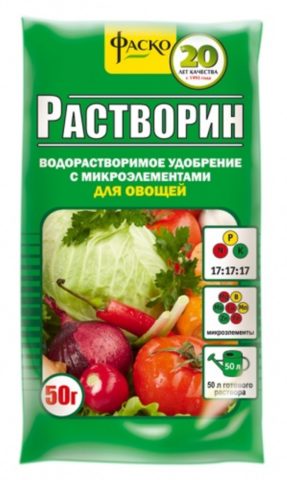
Fertilizer differs in the percentage of active substances and feeding time
Fertilizer composition Solution
The product is produced in the form of a white powder or granules, both forms are readily soluble in water. Packing differs in weight and packaging, therefore it is convenient for summer cottages and farms. The packaged drug can be purchased in 15 g and 100 g, in plastic containers - starting from 1 kg, for planting in a large area, 25 kg bags are offered.
The solution contains the following active substances:
- Potassium (28%,) contributes to the normal absorption of water from the soil and distribution at the cellular level throughout the plant. Necessary at any stage of development. During the ripening of the fruit, the lack of potassium negatively affects the taste and chemical composition.
- Nitrogen (18%) promotes rapid cell division, is responsible for the growth and tillering of cultures. Thanks to this component, the plant gains aboveground mass. With a nitrogen deficiency, crops lag behind in growth, stress resistance worsens. Weak plants are susceptible to infections, more often affected by pests.
- Phosphorus (18%) necessary for the development of the root system. Accumulating in tissues, it ensures the development of the reproductive part of the plant. Without phosphorus, flowering, pollen formation and fruit formation are impossible.
Auxiliary elements in the fertilizer Solution:
- zinc;
- copper;
- molybdenum;
- boron;
- manganese.
Each macronutrient plays a role in the biological cycle of plants.
Fertilizer types Solution
Fertilizer is represented by several types, which differ in the percentage of active elements, each of which is recommended for certain plants and feeding time.
Fertilizer brands and percentage of substances:
Fertilizer type Solution | Nitrogen | Phosphorus | Potassium | Copper | Boron | Manganese | Magnesium | Zinc | Molybdenum |
AND | 10 | 5 | 20 | 1,5 | 1,5 | 1,5 | 1,5 | 1,5 | 1,5 |
A 1 | 8 | 6 | 28 | 2 | 1,5 | 1,5 | 3 | 1,5 | 1 |
B | 18 | 6 | 18 | 1,5 | 1,5 | 1,5 | 1,5 | 1,5 | 1 |
B 1 | 17 | 17 | 17 | 1,5 | 1,5 | 1,5 | 1,5 | 1,5 | — |
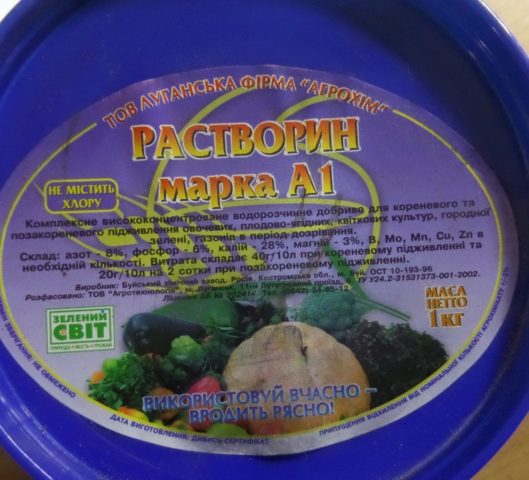
Used for feeding and improving soil composition
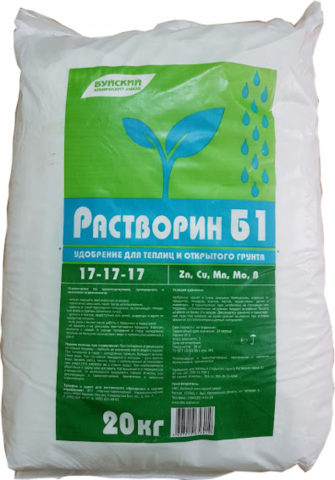
Suitable for all types of plants
Pros and cons of Mortar
Due to its effect on plants and soil, the fertilizer Solution is the most popular among potassium-phosphorus agents. Advantages of the drug:
- balanced composition of active and auxiliary elements;
- good water solubility;
- environmental Safety. The agent belongs to group 4 in terms of toxicity. It does not cause poisoning in animals, humans and pollinating insects;
- substances are in the form of sulfates, are easily absorbed by plants, are not washed out of the soil;
- you can use both root and foliar feeding;
- efficiency when cultivating in closed structures and in an open area;
- includes all the elements necessary for the growing season;
- compatible with any chemical preparations;
- increases resistance to infections;
- shortens the ripening period of fruits, improves their quality;
- the use of fertilizer increases the shelf life of the crop.
The drug has no disadvantages, but the dosage indicated in the instructions cannot be exceeded.
Instructions for use of the Solution
Fertilizer is used in liquid form. The concentration of the solution depends on the purpose, method, application time and type of culture. To correct the composition of the soil, for its better aeration, enrichment with the substances necessary for growth, the Mortar is introduced in the spring during the digging of the planting site. Watering at the rate of 50 g / 10 l per 1m2.
For growing crops, fertilizer Solution is used at the beginning of the season and for subsequent dressings. The schedule for each type of plant is individual.
Vegetable crops
The working solution for vegetable plants is made at the rate of 5 liters of water for an area of 0.5 m2... If necessary, increase or decrease the volume according to the indicated dosage:
- Tomatoes, eggplants, cabbage are grown in seedlings, therefore, during the laying of seeds, the substrate is watered using 7 g of fertilizer. After placing the seedlings in the ground, it will take 10 g to prepare the solution. During the formation of the ovaries, the plants are sprayed with a composition with the same concentration. For 10-14 days before the technical ripeness of the fruit, the processing is stopped.
- When five leaves are formed on zucchini and cucumbers, a solution containing 5 g of the drug is used. During the fruiting period, watered once a week using 12 g of Solution per 5 liters of water.
- For intensive growth of the aerial part, all root crops are fertilized 25 days after sowing the seeds. The potatoes are fed after flowering (solution dosage - 7 g).
For carrots, beets, radishes, it is undesirable to carry out a second feeding, since nitrogen stimulates the growth of tops to the detriment of the mass of root crops.
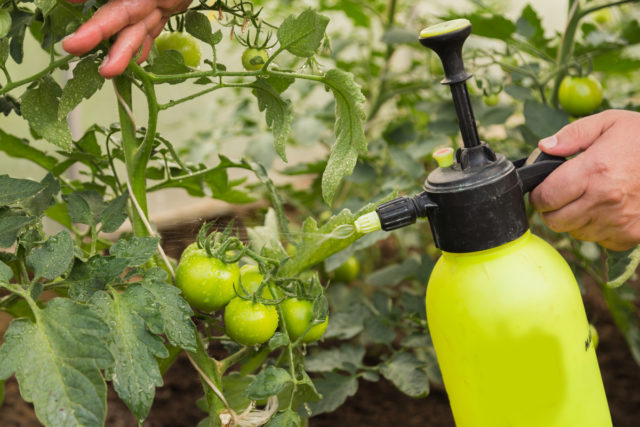
Foliar dressing with Solution is stopped 2 weeks before fruit ripening
Fruit, berry, ornamental plants
For these crops, the method of fertilization The solution and the frequency are different:
- For fruit trees in the spring, they are embedded in the ground during digging of the root circle - 35 g / 1 sq. After flowering, watered - 30g / 10 l.
- Strawberries are root-fed with a solution of 10 g / 10 l. After flowering, the procedure is repeated (with the same dosage).
- Berry bushes and raspberries are watered in early spring (10 g / 10 l) under each bush. The procedure is repeated after flowering (the concentration is the same).
- Flowering and ornamental plants are fertilized with Mortar at the beginning of the season (25 g / 10 l), then during shoot formation and flowering (in the same proportion).
You can use the fertilizer Solution after lawn germination, to stimulate growth, after mowing. Consumption - 50 g / 20 l per 2 m2.
Precautions when working with the Solution
The drug is not toxic, but during work it is necessary to observe personal protective measures:
- Use rubber gloves when mixing.
- Hands are protected when root dressing is carried out.
- When spraying the substance, it is recommended to use a mask and glasses.
After completing work, wash your hands and all exposed areas with warm water and soap.
Terms and conditions of storage Solution
The drug has no limited shelf life.
This negative factor affects dissolution in water. Do not leave the opened package under the sun, since some of the elements disintegrate under the influence of ultraviolet radiation, and the effectiveness of the fertilizer decreases.
Conclusion
Fertilizer reviews The solution fully confirms the characteristics specified in the instructions. After using the drug, the vegetation improves, the yield increases. The plant is less likely to get sick and tolerates stress more easily. The product is universal in use, suitable for all cultures.
